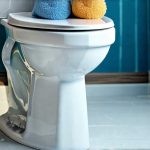Experiencing the frustrating cycle of needing to urinate shortly after emptying your bladder, even following minimal activity, is surprisingly common. It’s a complaint that many individuals hesitate to discuss, often attributing it to simply “being sensitive” or having a small bladder. However, this recurring urgency can significantly impact daily life – disrupting focus, causing anxiety, and potentially leading to social limitations. Understanding why this happens isn’t about self-diagnosing; it’s about gaining knowledge that empowers you to discuss the issue with healthcare professionals if necessary and adopt strategies for potential management. This article aims to explore the various factors contributing to frequent urination post-activity, moving beyond simple explanations to provide a more nuanced understanding of the underlying mechanisms at play.
It’s important to differentiate between genuinely concerning urinary frequency – where it’s accompanied by pain, fever, blood in urine, or significant disruption to daily life – and more benign instances that might resolve on their own with lifestyle adjustments. The sensation of needing to go again immediately after urinating isn’t always a sign of a serious problem. Often, it stems from habits, physiological responses to activity, or minor fluctuations in hydration levels. Recognizing the context surrounding these episodes—what you were doing beforehand, how much fluid you’ve consumed, and any associated symptoms—is crucial for determining whether further investigation is warranted. This article will delve into those contexts and offer insights into potential causes without offering medical diagnosis.
Common Causes & Physiological Mechanisms
Frequent urination following even simple activities, such as walking a short distance or lifting something light, often isn’t about the bladder actually being full again so quickly. It’s more frequently about a heightened awareness of the bladder and an increased sense of urgency. Several factors can contribute to this. First, consider that muscles are interconnected. Activities engage core muscles which directly influence pelvic floor function. A weakened or overly tense pelvic floor can lead to issues with bladder control, triggering the sensation of needing to void even when little urine remains. Secondly, hydration plays a significant role – not just how much you drink, but when and what type of fluids. Consuming large amounts of liquid before activity, especially diuretics like caffeine or alcohol, will naturally increase urinary frequency. Finally, psychological factors are often underestimated; stress and anxiety can amplify bodily sensations, making even a slight bladder sensation feel overwhelming and urgent.
The physiological mechanisms behind this phenomenon involve the interplay between the nervous system, muscles, and hormones. When you engage in physical activity, your body releases adrenaline, which can temporarily increase heart rate and blood pressure. This also impacts kidney function – leading to increased urine production as the kidneys filter more fluid. Even a mild increase in intra-abdominal pressure from movement can put pressure on the bladder, triggering the urge to urinate. Furthermore, some individuals have a naturally higher sensitivity to bladder stretch receptors; these receptors send signals to the brain when the bladder fills, and a heightened sensitivity means even small amounts of urine can trigger an urgent sensation.
It’s also crucial to understand that “simple activity” is subjective. What one person considers simple might be more strenuous for another. Someone recovering from surgery or with pre-existing musculoskeletal issues may experience greater intra-abdominal pressure during movement, leading to increased urinary urgency. Similarly, individuals who are significantly deconditioned might find even moderate activity taxing on their pelvic floor muscles, contributing to the problem. Therefore, understanding your own physical limitations and adjusting activities accordingly is a key step towards management.
Understanding Pelvic Floor Dysfunction
Pelvic floor dysfunction (PFD) encompasses a range of conditions affecting the muscles that support the bladder, bowel, and reproductive organs. It’s often an overlooked contributor to frequent urination, especially post-activity. PFD can manifest in two primary ways: hypertonicity (muscles are too tight) or hypotonicity (muscles are too weak). Both can disrupt normal bladder function. Hypertonic pelvic floor muscles restrict the bladder’s ability to fill comfortably, leading to frequent urges even with small volumes of urine. Conversely, hypotonic muscles offer insufficient support, increasing the risk of accidental leakage and a feeling of incomplete emptying, prompting repeated trips to the bathroom.
Diagnosing PFD typically requires assessment by a qualified healthcare professional – often a pelvic floor physical therapist. Treatment focuses on restoring proper muscle function through targeted exercises. For hypertonicity, techniques like myofascial release and stretching can help relax the muscles. For hypotonicity, strengthening exercises, such as Kegels (performed correctly!), are used to build muscle tone and support. It’s important to note that Kegels aren’t a universal solution; incorrect performance or doing them when the pelvic floor is already overly tight can actually worsen symptoms. A personalized exercise program tailored to your specific needs is essential.
Beyond exercises, lifestyle modifications can also play a role in managing PFD. Maintaining a healthy weight reduces pressure on the pelvic floor. Avoiding constipation – which strains the pelvic muscles – and practicing good posture are also beneficial. The key takeaway here is that PFD isn’t just about “weak bladder control”; it’s about restoring the proper mechanics of the entire pelvic support system.
The Role of Hydration & Dietary Choices
While adequate hydration is essential for overall health, how you hydrate can significantly impact urinary frequency. Sipping water consistently throughout the day is preferable to gulping down large amounts at once. This allows your kidneys to process fluids more efficiently and reduces the sudden surge in bladder volume. Similarly, timing fluid intake strategically – avoiding large volumes before activity or bedtime—can help minimize urgency. Consider also the types of beverages you consume.
Caffeine, alcohol, carbonated drinks, and artificial sweeteners are all known diuretics, meaning they increase urine production. Reducing consumption of these substances can often lead to a noticeable decrease in urinary frequency. Certain foods, like citrus fruits and tomatoes, can also irritate the bladder in some individuals. Maintaining a food diary can help identify potential triggers and guide dietary adjustments. It’s not necessarily about eliminating these items entirely; it’s about understanding how they affect your body and adjusting intake accordingly.
Finally, remember that hydration needs vary based on activity level, climate, and individual physiology. There is no one-size-fits-all recommendation for daily fluid intake. Pay attention to your body’s signals – thirst is a reliable indicator of dehydration. However, don’t wait until you feel thirsty to drink; aim for consistent sips throughout the day.
Addressing Psychological Factors and Bladder Habits
The mind-body connection is powerful, and psychological factors often play a significant role in urinary frequency. Stress, anxiety, and even learned behaviors can contribute to the sensation of needing to urinate frequently. For example, if you’ve experienced an embarrassing leak or urgency episode in the past, you might develop anticipatory anxiety – worrying about it happening again—which amplifies bladder sensations. Similarly, habitual “just-in-case” voiding – going to the bathroom even when you don’t necessarily need to – can retrain your brain to perceive a full bladder even when it’s not.
Addressing these psychological factors requires a multi-faceted approach. Stress management techniques like mindfulness, deep breathing exercises, and yoga can help reduce overall anxiety levels. Cognitive behavioral therapy (CBT) can be particularly effective in addressing bladder habits and anticipatory anxiety. CBT helps you identify and challenge negative thought patterns and develop coping strategies for managing urgency.
Breaking “just-in-case” voiding requires conscious effort. Try to delay urination for a few minutes when you feel the urge – gradually increasing the interval over time. This can help retrain your bladder and reduce its sensitivity. Remember that it’s okay to experience some discomfort during this process; it’s part of rebuilding confidence and control. If psychological factors are significantly impacting your quality of life, seeking guidance from a therapist or counselor is highly recommended.
This article provides information for general knowledge and informational purposes only, and does not constitute medical advice. It is essential to consult with a qualified healthcare professional for any health concerns or before making any decisions related to your health or treatment.





















